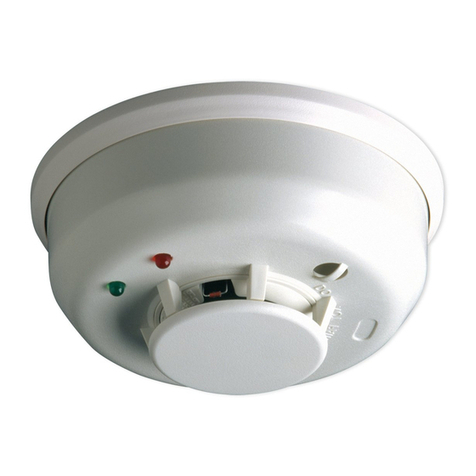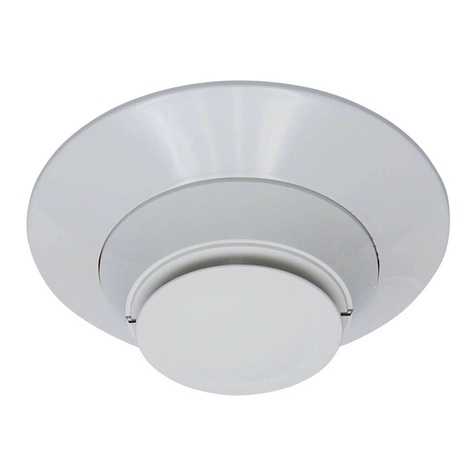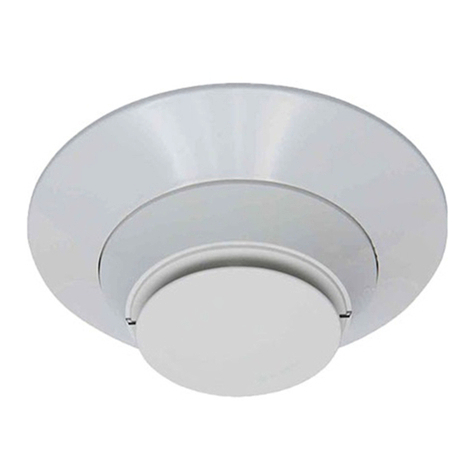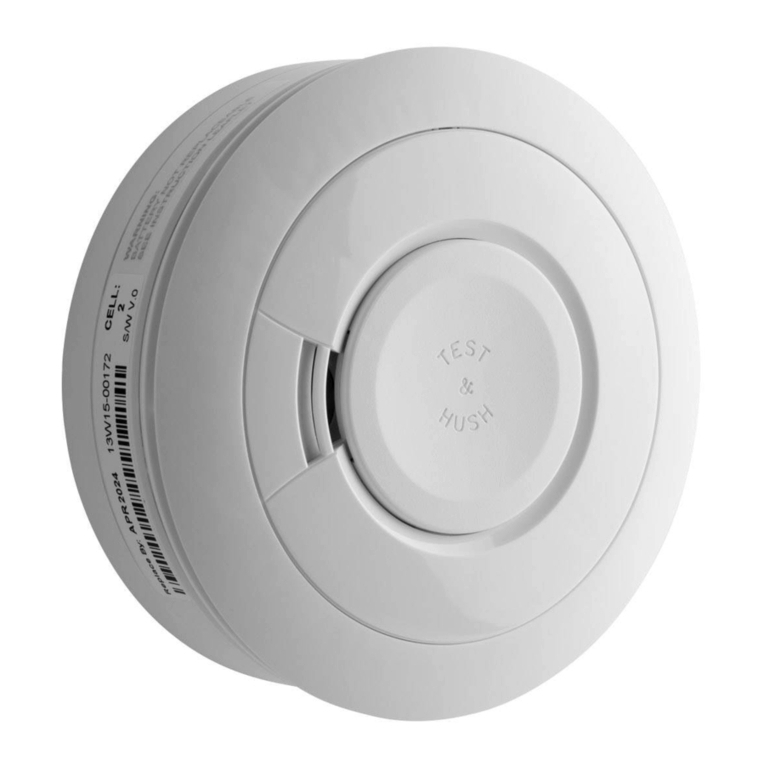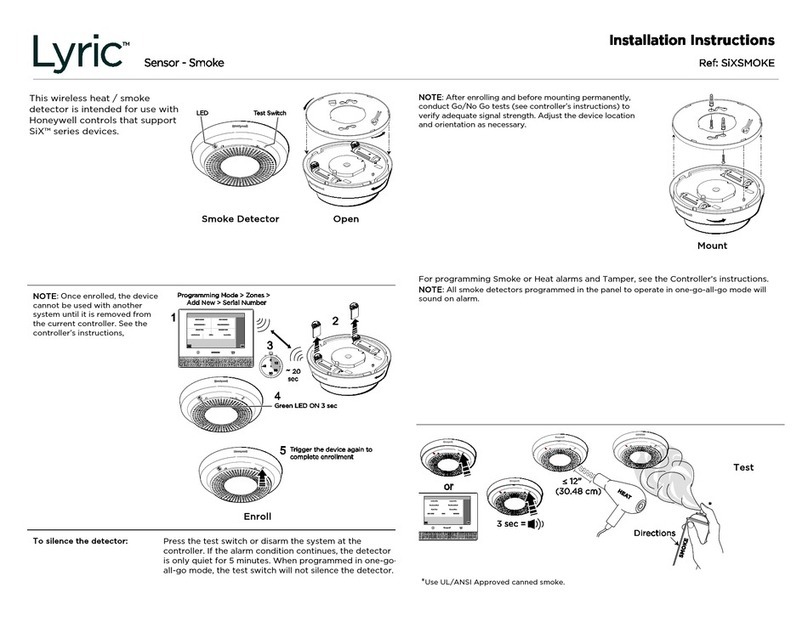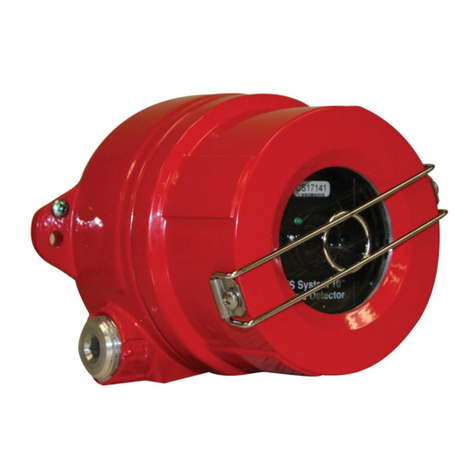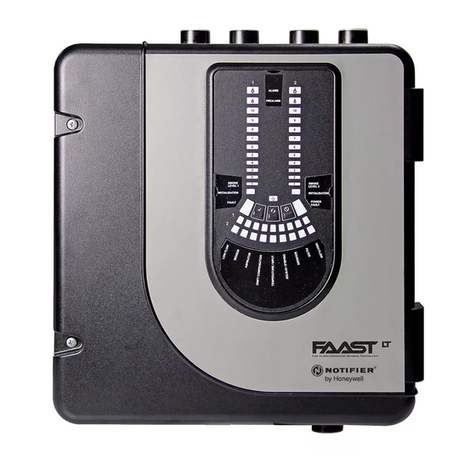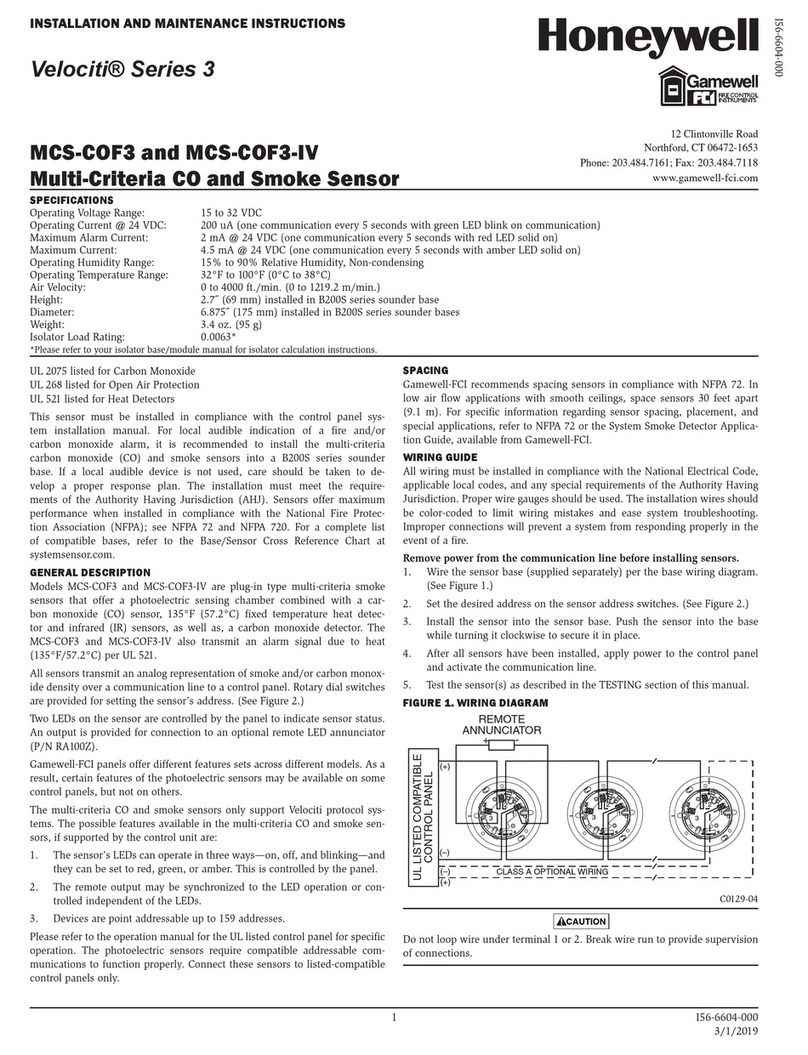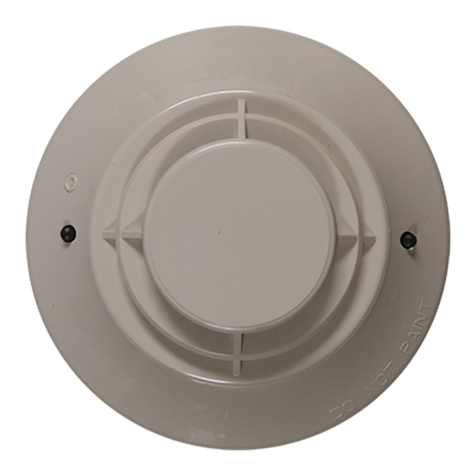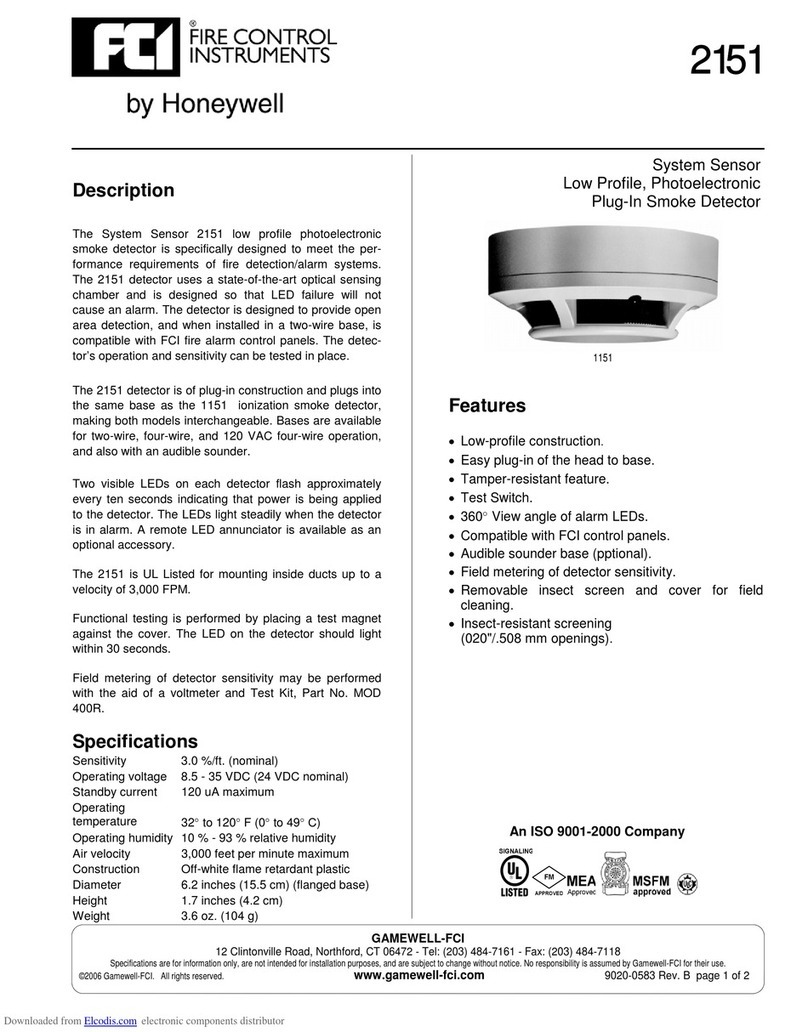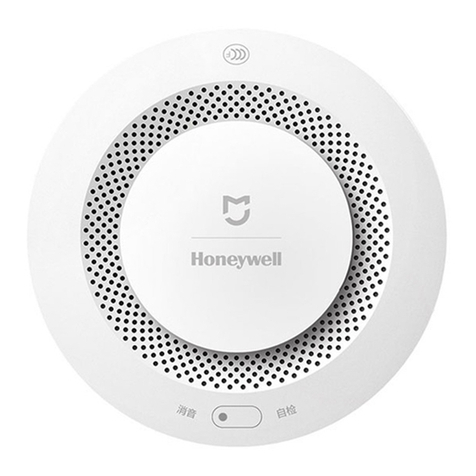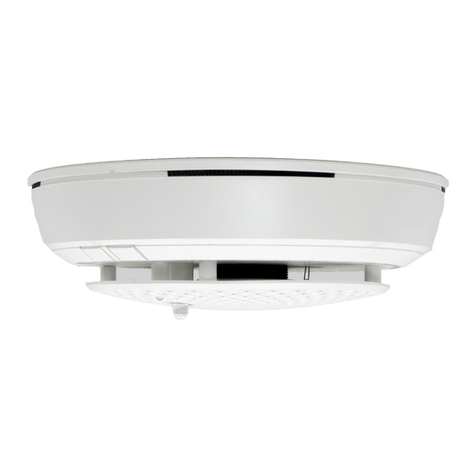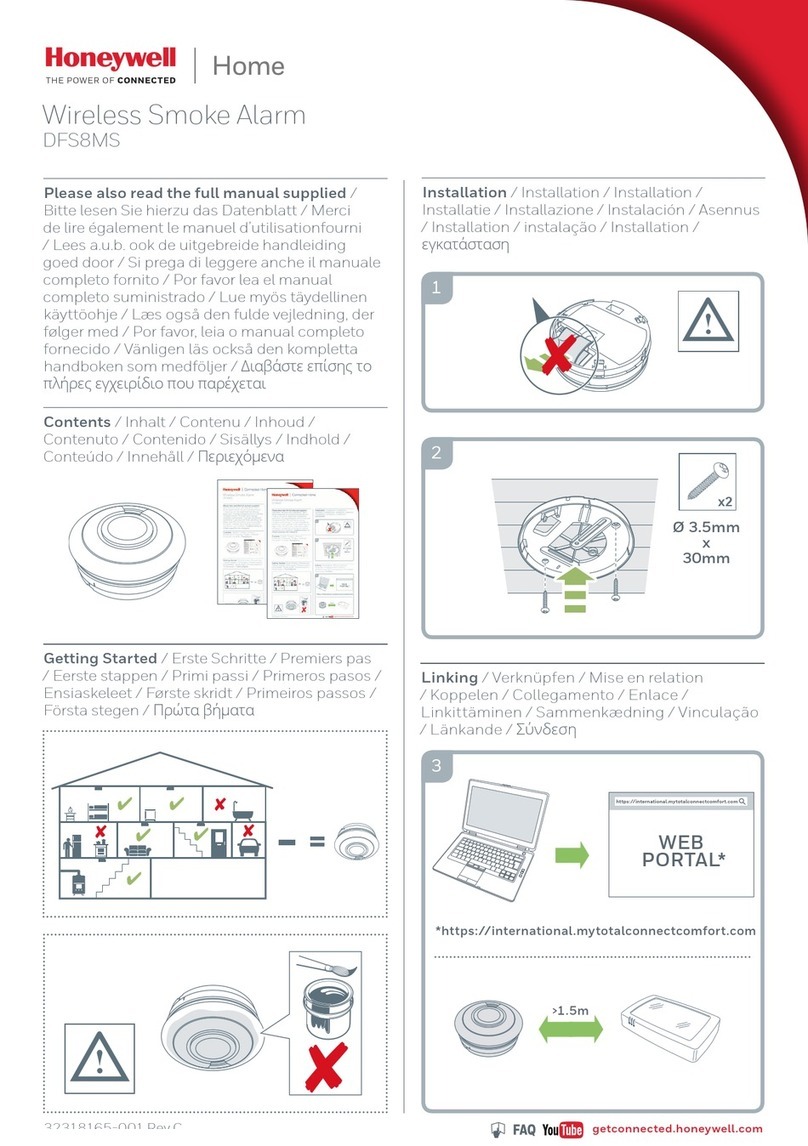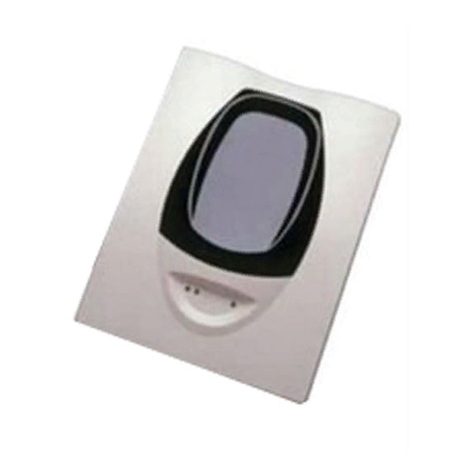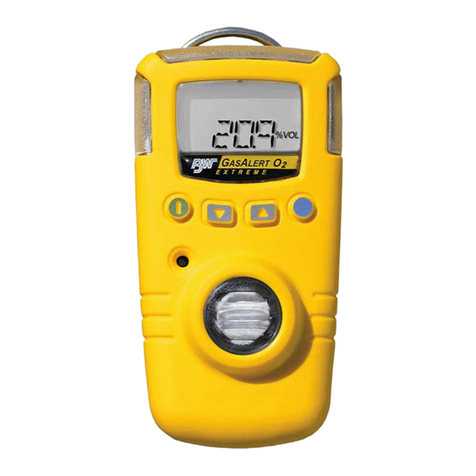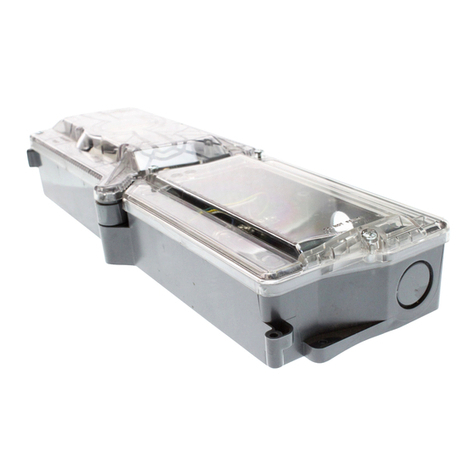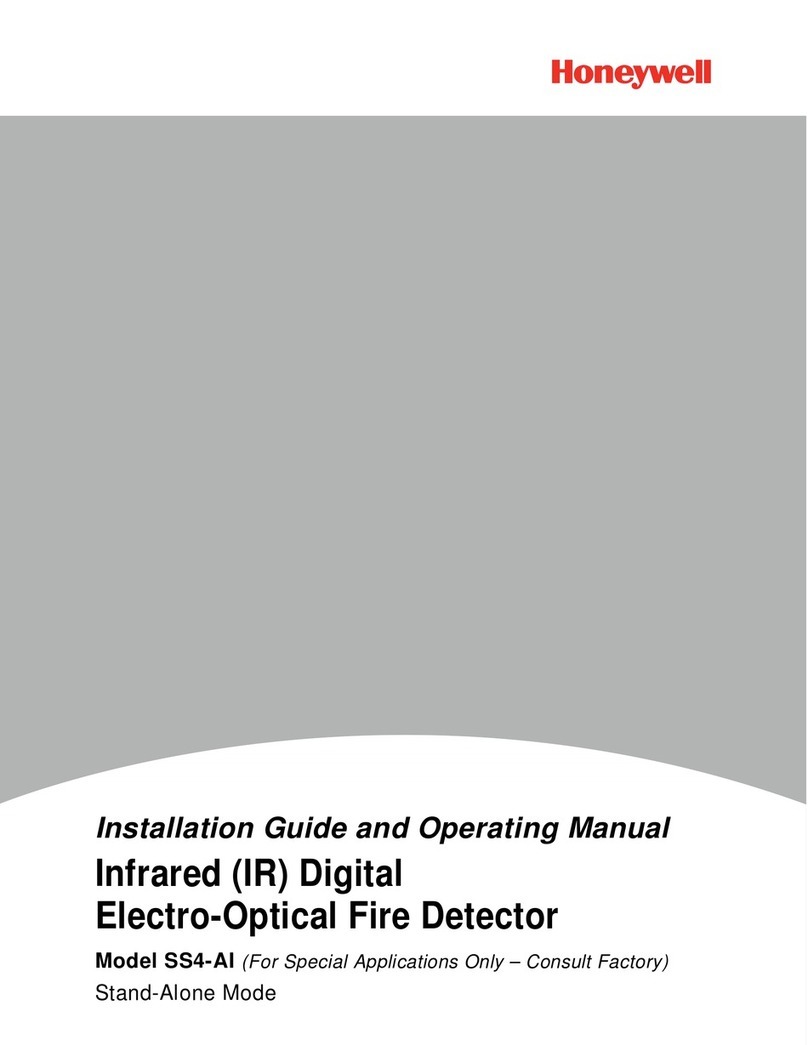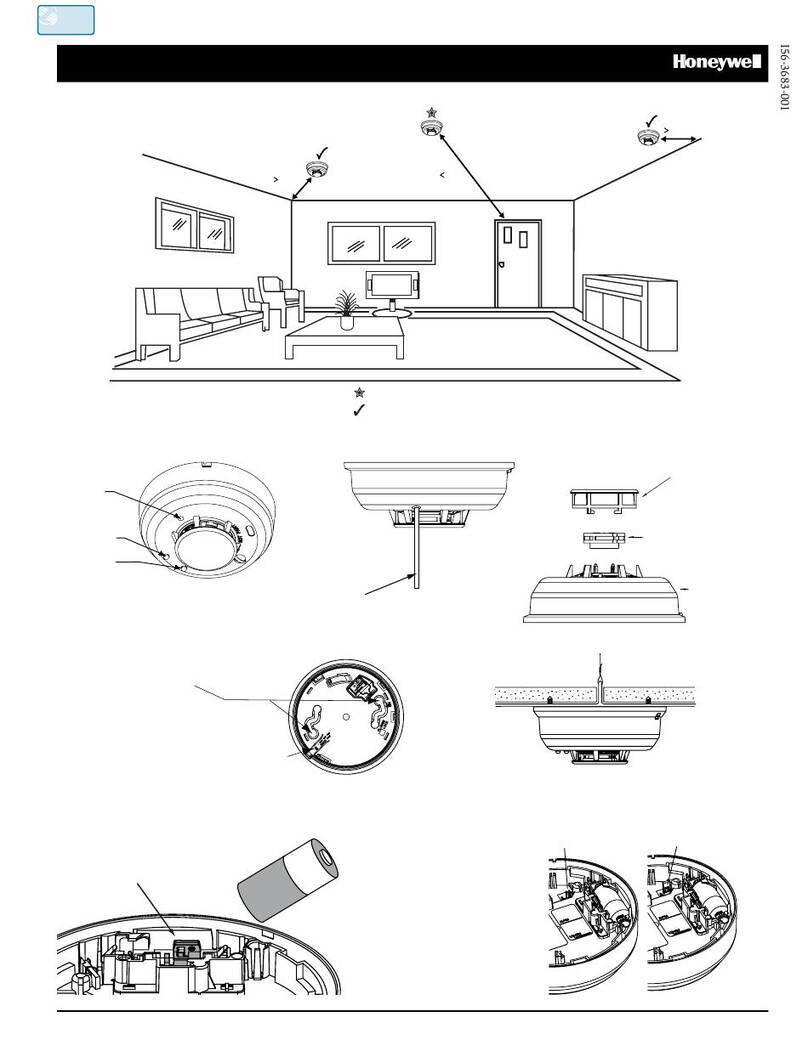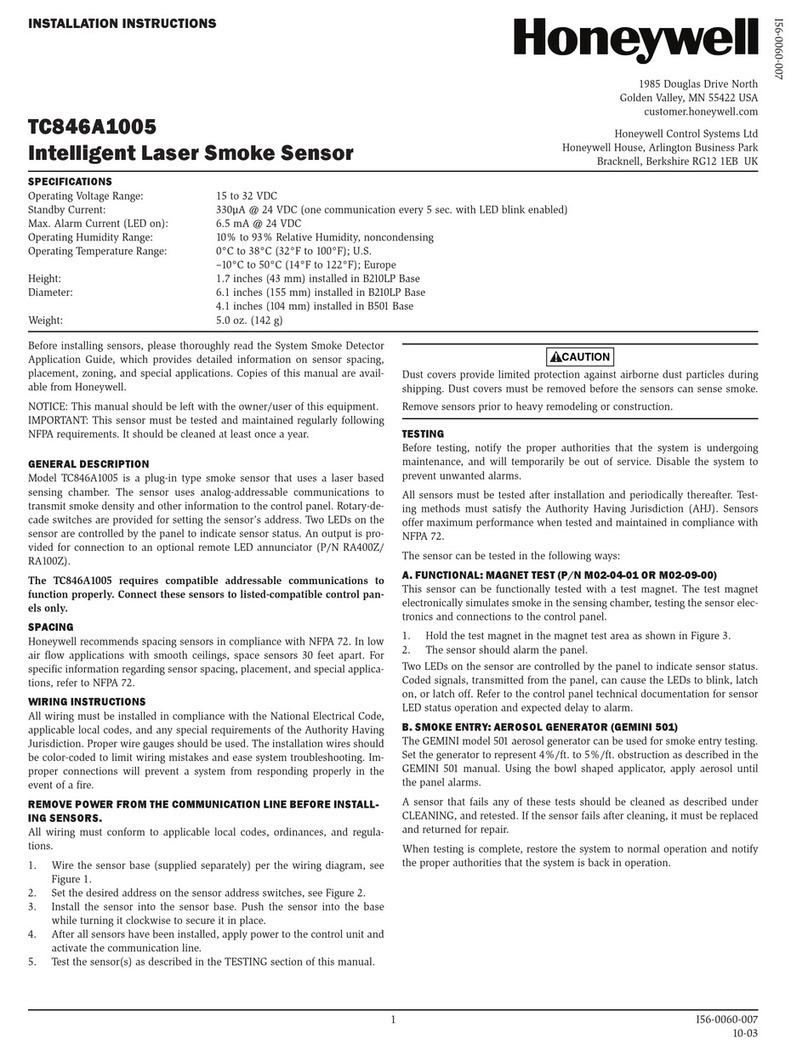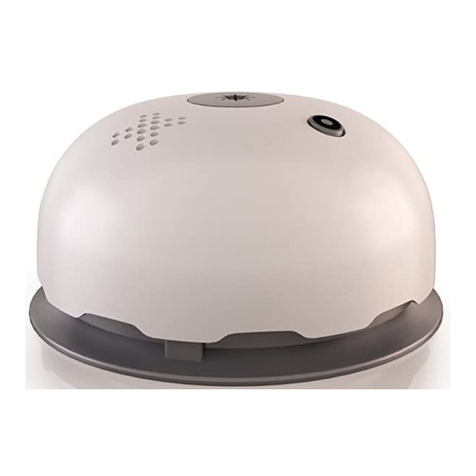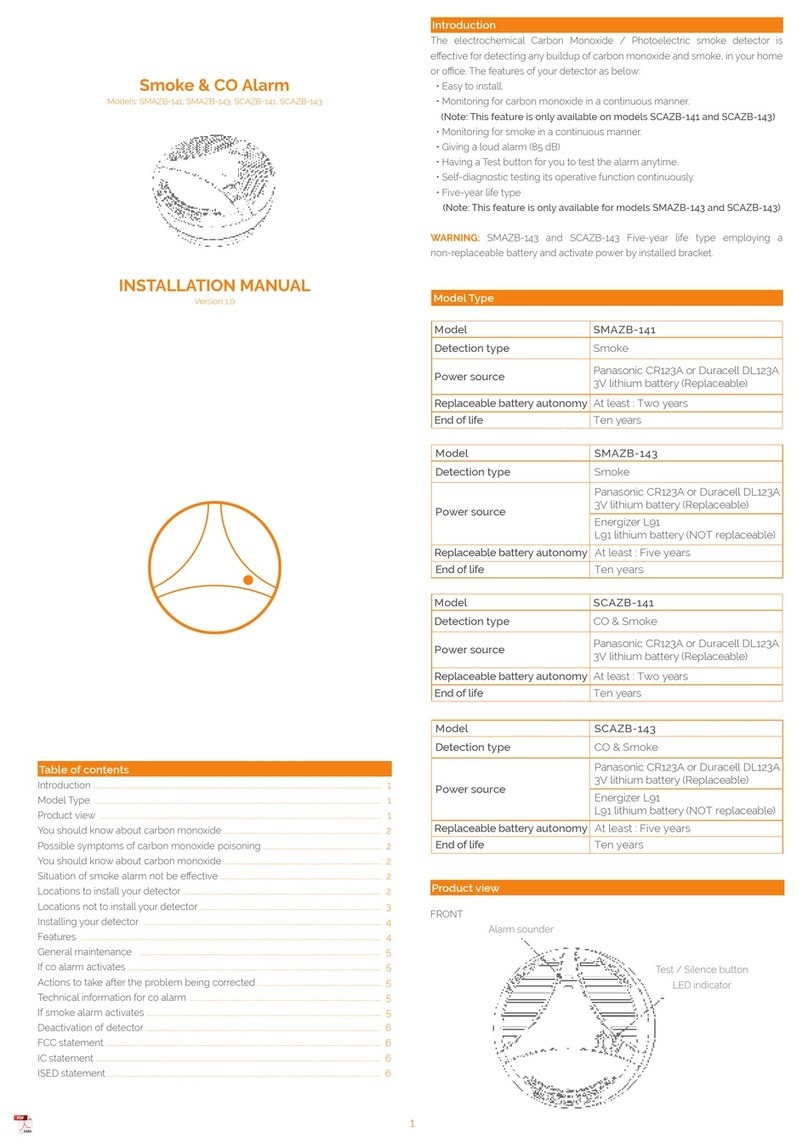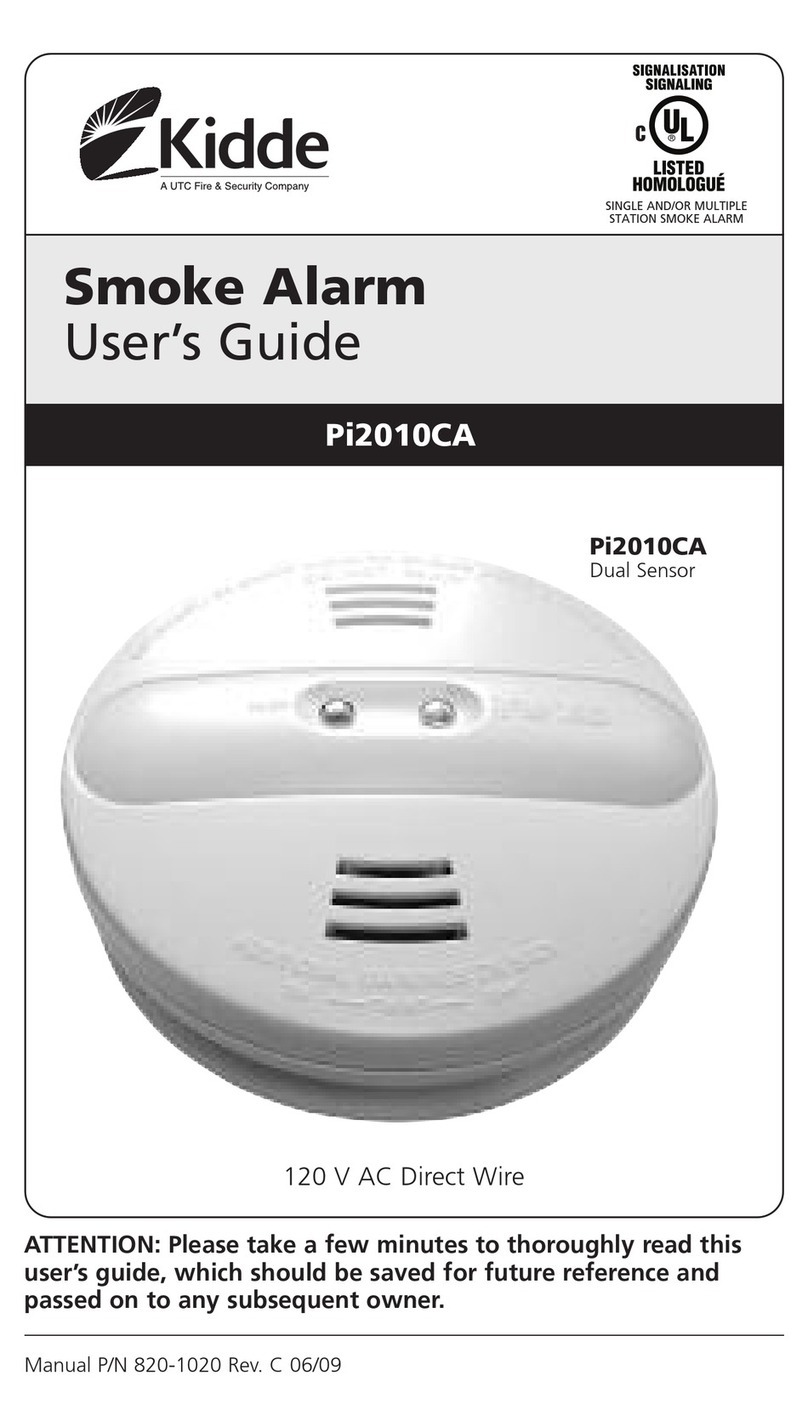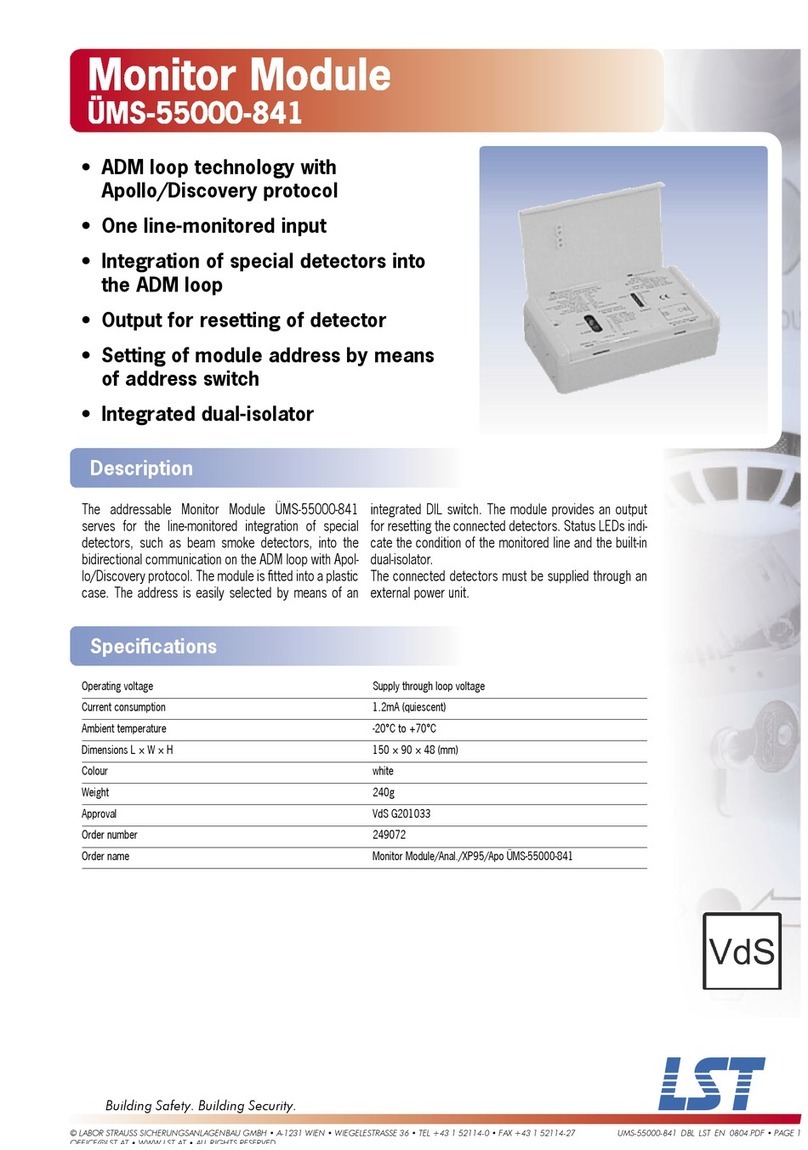
H200-50-00 PittwayTecnologica S.r.l., Via Caboto 19/3, 34147Trieste, Italy I56-2627-0051
INSTALLATION AND MAINTENANCE INSTRUCTIONS FOR MODEL TC842B1007
INTRINSICALLY SAFE ANALOGUE ADDRESSABLE PHOTO ELECTRONIC SMOKE SENSOR
GENERAL DESCRIPTION
Model TC842B1007 is an intrinsically safe smoke detector that combines a photo electronic sensing chamber with analogue addressable
communications and is for use in hazardous areas where potentially explosive atmospheres are likely to arise. The classification of equipment
required must be confirmed with your responsible authority. The sensor communicates via a dedicated Galvanic Isolator Barrier with an IST200
Translator Module wich relays the data to the Controls Panel. Rotary decade switches are provided for setting the sensors address.
Two LEDs on each sensor provide a local 360° visible sensor indication. These LEDs can be latched on by code command from the control panel
for local alarm indication. They are unlatched to the normal condition by code command, and may also be set to blink in normal operation.
SPECIFICATIONS
OperatingVoltageRange 17 to 24 VDC
Max. Avg. Standby Current 330 µA (One communication every 5 sec. With
LED blink enabled)
Max. Alarm Current (LED on) 4.2 mA @ 24 VDC
Operating Humidity Range: 5% to 93% Relative Humidity, Non-Condensing
OperatingTemperature Range: -10°C to 40°C
Maximum AirVelocity 0.34m/s (4000ft/min)
Height: 43 mm installed in 14506414-007 base
Diameter: 102 mm installed in 14506414-007 base
Weight: 110g
Intrinsic Safety Rating: II 1 G EEx ia IIB T5
This detector has been independently tested and certified to EN54 part 7 and BASEEFA
approved for intrinsic safety.
ACCESSORIES (Available Separately from Honeywell)
IST200 Translator Module May drive up to 15 2251EIS sensors
Pepperl andFuchsY72221 DedicatedGalvanicIsolatorBarrierforTC842B1007 detectors to drive up to15TC842B1007sensors
WIRING GUIDE
Refer to the installation instructions supplied with the IST200Translator Module, and 14506414-007 Base for wiring details.
Note: All wiring must conform to applicable local and national codes and regulations.
Verify that all sensor bases are installed and that polarity of the wiring is correct at each base.
WARNING
Disconnect loop power before installing sensors.
SENSOR INSTALLATION
1. Set the sensor address (see figure 1) by using a flat blade screwdriver to turn the two rotary switches, selecting the desired number
between01and99. Recordtheaddressonthelabel attached to the base.
2. Insert the sensor into the base and rotate it clockwise with gentle pressure until it drops into place.
3. Continue to rotate the sensor until it locks into the base.
4. After all the sensors have been installed, apply power to the system.
5. Test the sensor as described under TESTING.
6. Reset the sensor by communication command from the panel.
Tamper-Resistance.
Model TC842B1007 includes a feature that, when activated, prevents removal of the sensor without the use of a tool. Refer to the installation
instructions for the sensor base for details of how to use this feature.
CAUTION
Dust covers help to protect units during shipping and when first installed.They are not intended to provide complete protection
against contamination therefore sensors should be removed before construction, major re-decoration or other dust producing work
is started. Dust covers must be removed before system can be made operational.
MAINTENANCE
Before cleaning, notify the proper authorities that the system is undergoing maintenance and will be temporarily out of service. Disable the
system to prevent unwanted alarms.
1. Remove the sensor to be cleaned from the system.
2. Remove the sensor cover. Use a small flat blade screwdriver to gently release each of the four cover removal tabs that hold the cover in
place (see figure 3).
3. Vacuum the outside of the screen carefully without removing it.
4. Removethesensor screen. Pullthescreen straightawayfrom thesensingchamber untilitsnaps outofplace. Replacement screensareavailable.
5. Remove the chamber cover by pulling it gently away from the sensing chamber until it snaps out of place.
6. Use a vacuum cleaner and/or clean, compressed air to remove dust and debris from
the sensing chamber and sensing chamber cover.
7. Re-install the sensing chamber cover by aligning the arrow moulded on the cover with
the arrow printed on the circuit board and sliding the cover over the chamber, gently
pressing it home until it until it snaps into place.
8. Re-install or replace the sensing chamber screen by sliding it over the sensing
chamber. Rotate the screen until the locating tabs on the bottom rim locate in the
cutouts in the chamber base, and the top of the screen is flush with the top of the
chamber.
9. Re-install the sensor cover. Use the cover removal tabs and LEDs to align the cover
with the sensor. Snap the cover into place.
10. When all sensors have been cleaned, restore power to the loop and test the sensor(s) as described under TESTING.
CAUTION
The Detector has a plastic enclosure that may present an electrostatic risk and must not be installed in a position where it may be
subject to a high dust-laden air flow. Clean only with a damp cloth and do not rub.
TESTING
Sensors must be tested after installation and following periodic maintenance. However, before testing, notify the proper authorities that the smoke
detector system is undergoing maintenance and the system will be temporarily out of service. Disable the zone or system undergoing
maintenance to prevent unwanted alarms.
In addition, check to ensure that the LEDs blink (if this feature is operational under software command). If they do not, power has been lost to the
sensor (check the wiring) if it is defective (return it for repair).
IMPORTANT:If testing is carried out using non-intrinsically safe methods, it must be conducted outside the hazardous area.
Test the sensors as follows:
MagnetTest (OptionalTest Magnet Part No M02-24)
1. Test the sensor by positioning the test magnet (model M02-24-optional) against the sensor body approximately 2cm from LED1 in the
direction of the metering socket as shown in figure 2.
2. The red LED’s on the detector should latch into alarm within 30 seconds, and the control panel should activate into alarm.
Smoke method
1. Using generated smoke, or synthetic smoke aerosol from an approved manufacturer such as No Climb Products Ltd, subject the detector to
controlled amounts of smoke in accordance with local codes of practice and manufacturer recommendations.
2. The red LED’s on the detector should latch into alarm within 30 seconds, and the control panel should activate into alarm.
After completion of the test notify the proper authorities that the system is operational.
Sensors that fail this test should be cleaned as described under MAINTENANCE and retested. If the sensors still fail this test they should be
returned for repair.
WARNING
LIMITATIONS OF SMOKE DETECTORS
This smoke detector is designed to activate and initiate emergency action, but will do so only when used in conjunction with other equipment.
Smoke detectors will not work without power.
Smoke detectors will not sense fires which start where smoke does not reach the detectors. Smoke from fires in chimneys, in walls, on roofs, or
on the other side of closed doors may not reach the smoke detector and trigger the unit.
A detector may not detect a fire developing on another level of a building. For this reason, detectors should be located on every level for a building.
Smoke detectors also have sensing limitations. Ionisation detectors offer a broad range fire-sensing capability, but they are better at detecting
fast, flaming fires than slow smouldering fires. Photo electronic detectors sense smouldering fires better than flaming fires. Because fires develop
in different ways, and are often unpredictable in their growth, neither type of detector is necessarily better and a given detector may not always
provide warning of a fire. In general, detectors cannot be expected to provide warnings for fires resulting from inadequate fire protection practices,
violent explosions, escaping gas, improper storage of flammable liquids like cleaning solvents, other safety hazards, or arson. Smoke detectors
used in high air velocity conditions may fail to alarm due to dilution of smoke densities created by such frequent and rapid air exchanges.
Additionally, high air velocity environments may create increased dust contamination, demanding more frequent maintenance.
Figure 1: Rotary Decade Address Switch
44
0
2
3
10
2
3
1
67
55
9
869
87
UNITSTENS
SENS
CHA
SEN
SCR
COVER
REMOVAL TABS
Figure 3: Sensor Assembly
SENSOR
SCREEN
SENSOR
COVER
TEST
MAGNET
LED
INDICATOR
LED
INDICATOR
Figure 2:Test Magnet Position
SENSING
CHAMBER
COVER
REMOVALTABS
0832
0832-CPD-0200

